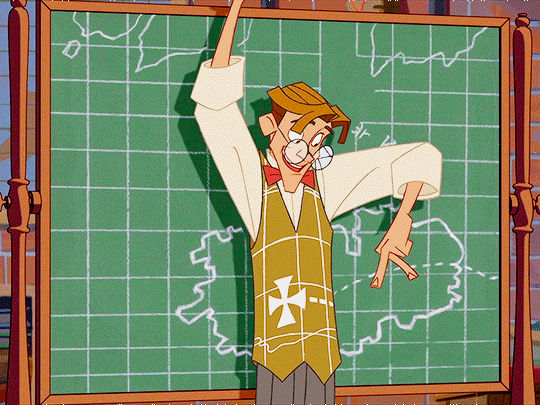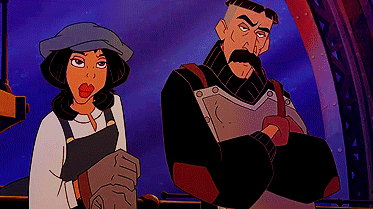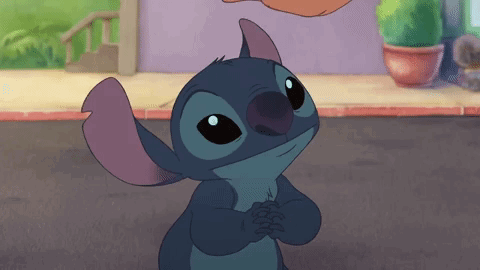originally posted at https://canmom.tumblr.com/post/652360...
Oh, Disney. Goddamn fucking Disney.
Disney is now, curse its name, the monolithic, undying entity which holds half the American entertainment industry in its grasp… churning out milquetoast, soulless cgi film after film yet somehow always making billions, monkeying around with paying its staff, and generally flouting its power…
…which is really nothing new for Walt ‘report union organisers to the house un-american activity committee’ Disney and his company: the company whose image grew out of the minstrel-adjacent Fleischer era and quickly became synonymous with hyper-sanitised, nigh-cryptofashy retellings of history and fairytales. But all the same, it almost seems quaint to think of it as ever being primarily a traditional animation company.

There was a point, of course, when Disney completely dominated the animation industry around the world. They literally wrote the book on what ‘good animation’ is supposed to be, to the point that animation pedagogy still cannot escape the shadow of the vaunted ‘12 Principles of Animation’ laid down by two of the famous Nine Old Men. A lot of that simply came down to money: Disney had so much money that they could pay a vast army of ‘assistants’, cleanup artists, cel painters etc. and animate entire movies on 1s and 2s. Their dominance came and went, but even some of the more independent American directors we’ve seen like Don Bluth, Ralph Bakshi and indeed Richard Williams (who wrote the other book on animation) spent significant time at Disney before finding the environment too stifling and striking out on their own.
So when I say money… I mean they could afford to create Disney’s trademark ‘full animation’, designed to create the ‘illusion of life’, with an enormous amount of technical precision to animate every character in every movie on 1s and 2s, and likewise great deal of time and care assigned to give them squashy, bouncy movement and capture the nuances of character animation then perfectly cleanup every shaky line. To Disney, their people with the title of Animator were essentially actors, and lauded in the same way. Below the level of the Animator ‘acting’ out a particular character, there could be no possibility for individual expression in particular shots; indeed, the armies of artists drawing the frames ought to disappear, and if an individual touch showed through, that was a mistake that needed fixing.

Was this kind of animation ‘better’? It certainly has a lot of specific charms, and as an animator in training, there are often times I see a static mouth-flapping shot in less lavish productions and wish they could afford to put a bit more character into the performance… but of course, mostly it was expensive. How could anyone compete with Disney, without all the infrastructure that Disney had defined as necessary to make ‘full animation’? Thus Disney’s dominance would be assured. (It’s a curiously self-reinforcing thing: when Disney started to relax those standards in the 70s, producing a string of lower budget, less ambitious movies, Don Bluth left to launch an offshoot company to beat them at their own game, which was answered with the Disney ‘renaissance’: a formula of celebrity voices, merchandising oriented designs and stories with an emphasis on humour that began with Aladdin.)
I don’t really say this to disrespect the Disney animators. They generally speaking achieved their particular artistic ambitions (even if sometimes they were misguided), and ngl, in this age of toon boom puppets and CGI, I do get excited when someone tries to bring back ‘full animation’. Just tragic that all that effort and genuinely strong animation was given to movies like Klaus, but really, what do I expect?
So how did that end? Let’s roll up to the mid 2000s. As far as I understand the story (and I’m low on time to research), the Disney ‘renaissance’ was running out of steam after some pretty unsuccessful movies, the forked clone studio Dreamworks wasn’t doing much better, and the powers that be pointed the finger at the ~viewing public~ no longer being interested in traditional animation when shiny new CGI movies were starting to land.
To me, the blame lies a lot more with a total lack of confidence in their ability to seel animation outside the mould of ‘family friendly comedy’, resulting in studio insistence on, for example, the awful comic relief gargoyles in Hunchback of Notre Dame, the awful comic relief robot in Treasure Planet, and I can only presume the godawful tension-evaporating voiceover in Spirit… it’s certainly not that it’s impossible to tell a story that combines comedy and drama/tragedy, indeed many of the best stories succeed at blending the two, but these movies tended to fit together poorly, each part sabotaging the others.
Still, others point more conspiratorial fingers at a deliberate sabotage at the marketing stage to give an excuse to kill off traditional animation in favour of more profitable CG, which, idk, if that was true it seems like they’d be cutting off their nose to spite their face.

Whatever the reason, that brings us to the some of the last tradigitally animated movies to be made by Disney: Atlantis: The Lost Empire, Lilo and Stitch and Treasure Planet, which came out in the period 2001-2002. (Actually there would be a couple more after this, notably The Princess and the Frog in 2009, before Disney’s animated film department fully turned to CGI.)
Let’s quickly run down the list! Lilo and Stitch tends to be the best remembered of the three, with the most narrative and thematic cohesion and some really incredibly charming character designs, plus doing much more justice to its Hawaiian setting than Disney films tend to. I’m never going to claim a Disney film is especially subversive, but given the colonial history of Hawaii, the early scenes of Lilo fucking with tourists are surprisingly sharp (the cut versions even more so), and once the plot gets going, it’s a strong found-family story of outcasts finding a degree of solidarity, as troubled child Lilo, raised by her sister, adopts a chaotic, fugitive alien.
Atlantis doesn’t seem to have left the same mark on history - but it did leave a mark on a young Bryn, to the point that it enjoyed a brief stint as her favourite movie, provoking a fair bit of fanart, interest in the actual myth, and even diligently playing through the dubious game tie-in. A dieselpunk adventure story, it’s… also about colonialism actually! funny that. In retrospect, it’s a fairly standard example of the genre! The myth of Atlantis turns out to be true: a hidden, super-high-tech society in decline needs the spark of a nerdy linguist boy to both get with its princess, revitalise its society and then fend off the mercenary expedition he unwittingly invited in who would just love to plunder the city of its tech. Deeply tropey and kind of fraught, but if it’s anything like I remember, quite atmospheric for all that. (Whether it is derivative of Gainax’s Nadia and the Secret of Blue Water series, which has a strikingly similar aesthetic and premise, is out of scope for this post lmao.)

Then there’s Treasure Planet! (Not to be confused with the delightful Bulgarian film we watched back on Animation Night 7.)
The story with this one, which I believe I learned from this very long video essay by someone called Breadsword, is that it was a passion product which the animators repeatedly begged people like Michael Eisner and Jeffrey Katzenberg to let them create since 1985. Perhaps apocryphally since this does not appear on wikipedia, one of those high ranking guys is said to have promised that if they made a certain number of movies per the formula, they would greenlight Treasure Planet.
To realise this vision, they used a CG system developed for the swinging scenes in Tarzan which allowed the background artists to paint directly onto CG geometry, allowing complex camera movements while retaining a ‘painterly’ look… and gleefully applied it to almost every shot in the movie, just because they could I guess? This, along with some astonishingly detailed character designs brought to life with nigh-supernatural solid drawing skill, makes Treasure Planet one of those ‘literally how the fuck did they pull this off’ type of spectacle animated movies… but what could easily have just been well-executed adaptation of Treasure Island crossed with a scifi aesthetic derived from French comics, with a great deal of attention paid to character arcs and expressive animation gets sabotaged by a week comedic middle section, meaning it never got the reception it could have.
When I began Animation Night, I had a couple of rules for myself: no later Miyazaki and none of the really famous Disneys. Mostly this was out of a sense of like, not showing people stuff they’d already seen, so I let myself include a couple of earlier Disney works like Fantasia when they fit the theme, and lesser-known Miyazakis like Castle of Cagliostro. Well, I kept that up for more than a year, so hopefully this is a point where I can get away with breaking that rule. Forgive me~
Tonight the planet is to do a triple bill of the three Disney movies that came out in 2000-2001! This is going to be a slightly odd tonal mishmash, with two adventure films and one about found family, but hopefully it will hold up as a little sandwich.
I’m going to be starting pretty much right away at twitch.tv/canmom so please join me if you will for “Animation Night 55: content that is most likely to get me a copyright strike”…
noticeable uptick in ~engagement~ on animation night posts when i talk about the Mouse lol. maybe bc i tend to be a bit more critical? maybe bc people don’t want to look weebish? :p who knows… glad people enjoy my writing even if that one felt a bit phoned in if I’m honest, like i totally missed the story of mike mignola (the hellboy guy) designing the characters for Atlantis which would have been a good production tidbit.
honestly watching those movies back to back, the most striking thing was how much each one fumbled the ending. atlantis was definitely the weakest there - the arc of the journey to atlantis is very strong, but once they get there, it feels like everyone runs through the necessary plot points in a rush, so we neither got much chance to get to know any of the atlantean characters, nor much grounding for the mercenary characters turning against roarke - this is surely the most dramatic scene in the movie but it’s played off with jokes. the final battle has a potentially cool setpiece but it just doesn’t land, and the atlanteans are pretty much a footnote. the extremely weak score and sound design doesn’t help lol.
a big shame, bc the early parts of the movie, the character vignettes of the various mercenaries as milo becomes part of the group, i was pleasantly surprised at how well it still held up. this kind of character animation - conveying the quirks of a large cast through acting and character humour - is definitely disney’s strength. it sucks, though it’s hardly surprising, that the generic-indigenous-standin atlanteans aren’t permitted anything like the same degree of development.
lilo and stitch stands up well of course! the hyper-rounded shape design is a really unique look, there’s some beautiful colour work and animation especially in the surfing scenes, and the parallels between the carceral space authority hoping to punish stitch for being dysgenic (i’m not even exaggerating) and the ex-cia social worker character (who is well performed as like, sincerely believing he’s doing what’s best) are pretty overtly illustrated. even if the movie’s slogan is rather corny, it is at least well supported as a theme, and the too-easy resolution actually follows from it, which is more than you can say for a lot of these movies lol.
then treasure planet! definitely strongest in the first half before they get to the actual planet in question - less because of the robot, like he’s annoying but doesn’t take up as much of the film as I was led to believe, and more because the character arcs they worked so hard to develop in the first half of the film, like John Silver’s divided loyalties between his new adopted son and his old crew, are resolved very quickly in a few short scenes. it’s hard to get a sense of motivation; why John Silver is so determined to get his hands on the treasure, or why Jim doesn’t even hesitate to refuse when given the chance to join one of the only people he’s ever related to. it’s a shame because John Silver has such screen presence, as does side character Dr Doppler (who is the work of Sergio Pablos, at least partly? I’m not sure if they were still giving specific characters to specific animators at this stage) and the aristo catgirl pirate captain. but the ending is one again the bit that most lets it down: after escaping explodey planet through surfing shenanigans, which at least has some kind of basis as a bookending thing, Jim frees Silver and signs on to train as a space cop (more or less as in the novel I’m told); it’s got this bizarre scene where Jim’s like “no, father figure, I’ve got to follow my own path (by going to cop school)”, something which he showed absolutely no ambition towards at any point in the film.
anyway we spent most of the film discussing what if anything could be read as gay. (very little unless you take some pretty extreme interpretive liberties, but don’t let me stop you!)
comparing also with dreamworks’ output in the same period which we watched a couple months ago, all these films (except lilo) are terribly flawed… which is kind of exactly what makes them compelling, like it’s difficult to resist imagining how you could edit them to reach the potential they show in their best scenes. something about institutional pressures, i guess? i guess it’s no surprise that screenwriting confidence is inversely related to the amount of money lavished on a production: the more capital it is expected to valorise, the more interests it can’t offend, etc etc. here’s where you can go full banksy and talk about sweatshops printing out ‘family means noone gets left behind’ t-shirts ig.
anyway, it was a fun animation night for sure! we’ll be back to weeb town next week… most likely something kyoani but I’ll keep you updated
Comments